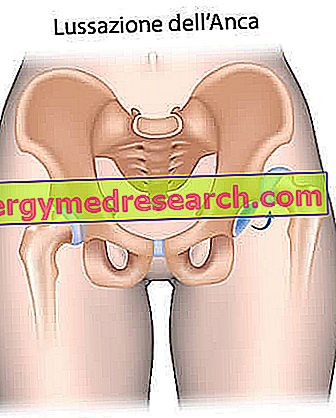See also: phytoestrogens
What are estrogens
Estrogens are a group of sex hormones typical of the female organism. They are mainly secreted by the ovary in response to the stimulation of a pituitary hormone called LH or luteinizing. A small amount of estrogen is also produced by the adrenal glands and the conversion of other hormones; in modest quantities they are also present in the male organism.
A group of natural and artificial substances characterized by a structure with four condensed hydrocarbuiric rings belong to the category of sterioid hormones.
The most well-known and important estrogen is estradiol and, as shown in the figure, it is processed by the ovaries starting from testosterone during the woman's fertile age; in pregnancy there are instead high concentrations of another estrogen, called estriol, produced in high quantity by the placenta; in menopause the estrone prevails, which derives mostly from the transformation of androstenedione to the level of the adipose tissue.

OESTROGENS |

|
Functions in women
Both natural and synthetic estrogens perform very important physiological functions.
First of all, they regulate sexual maturation by intervening in the development of the genital apparatus.
Their massive secretion in the puberty period induces the closure of the cartilages of conjugation of the long bones, ending in fact the phase of statural growth.
Estrogens stimulate stromal development of the breast and maintenance of secondary female characteristics (breast growth, hair distribution, voice, stature, bone structure, fat distribution).
They allow fertilization and pregnancy, intervening in the regulation of the menstrual cycle
They regulate the distribution of body fat, favoring its deposit in the hips, buttocks, thighs and abdomen below the navel.
They maintain bone trophism and therefore have a protective action against osteoporosis
They stimulate the synthesis of triglycerides and the increase in high-density lipoproteins (HDL or good cholesterol) protecting the vessel walls from arteriosclerotic damage. Since women possess far more estrogen than men up to menopause, the risk of developing cardiovascular disease is considerably lower.
They stimulate lipolysis in muscle and fat tissue. For this reason, estrogens improve the performance of enduring sports by sparing muscle glycogen at the expense of fatty acids
They regulate many brain functions including attention and memory.
They stimulate the hepatic synthesis of numerous enzymes and proteins (SHBG, angiotensinogen).
In some natural foods, such as soy, there are substances that mimic the effects of estrogen.
SOME EROTROGEN USED IN THERAPY:
| HORMONE | THERAPEUTIC ACTIVITY |
| Estradiol | In menstrual disorders due to endocrine imbalance, in symptoms of estrogen deficiency, following physiological or surgical menopause |
| Estriol | in menstrual disorders due to endocrine imbalance, in the treatment of menopausal disorders |
| ethinylestradiol | in menstrual disorders due to endocrine imbalance, in the treatment of menopausal disorders |
| promestriene | in urogenital atrophy, in estrogen deficiency vaginitis. |
| Ethinyl estradiol + cyproterone | in androgenic acne and in female androgenetic alopecia |
| Ethinyl estradiol-progestogen associations | prevention of conception |
| Estradiol + progestin associations | estrogen deficiency symptoms |
Despite all these beneficial properties an excess of estrogen is dangerous both from an aesthetic and a health point of view. While on the one hand these hormones promote the accumulation of adipose tissue and the appearance of water retention, on the other they expose the woman to a high risk of developing some forms of cancer such as breast cancer, insulin resistance, infertility and ovary and polyclinics.
The most effective way to maintain normal estrogen levels is to keep your body weight in check. In the female organism about two thirds of the production of estrogens takes place in adipose tissue thanks to an enzyme that converts the androgens produced by the adrenal glands into estrogens.
Functions in Man
In humans the amount of estrogen secreted by the testicle is particularly modest, although biologically important. However with increasing age, especially in the case of reduced physical activity and obesity, an increase in its conversion to estrogen is associated with a natural decline in testosterone production.
This phenomenon is linked to unpleasant side effects such as gynecomastia, decreased sexual desire, problems with erection and decreased fertility.



